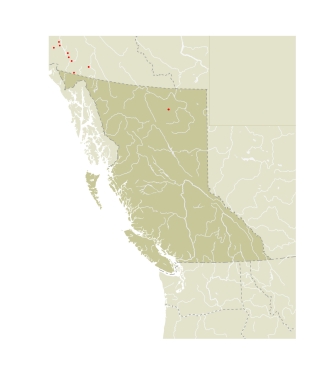The name Erebia is derived from the Greek Erebus, the region of darkness situated between earth and Hades (Reed 1871), in reference to the dark, dusky colour (Emmet 1991). The common name "alpines" was first used by Holland (1898) in reference to the alpine habitat of many species.
Alpines are medium-sized dark brown to black butterflies that have either submarginal eyespots or a red-flushed area on the forewings. In species with eyespots, there are usually orange-flushed areas around the spots. There are about 80 species worldwide, most of which are slow-flying.
The life histories of only some species are known. In these species, eggs are laid singly on leaves of grasses or sedges. They are white, cream, or yellow brown, and conical in shape with vertical ribs down the sides. First instar larvae are thinly covered with hairs, and are greenish with longitudinal stripes. Mature larvae are slender, and yellow green with light and dark longitudinal stripes down the back and sides. They are thinly covered with hairs, and may have two short tails. Alpines hibernate as partly grown larvae, and there are five or six instars. Pupae are roughly cylindrical, rounded, and suspended from a cremaster. They are pale brown. All alpines have only one generation each year, and some may take two years to mature. Erebia youngi and E. lafontainei are occasionally difficult to separate reliably (worn specimens), in which case they can be distinguished by the shape of the valves of the male genitalia.
|
|
